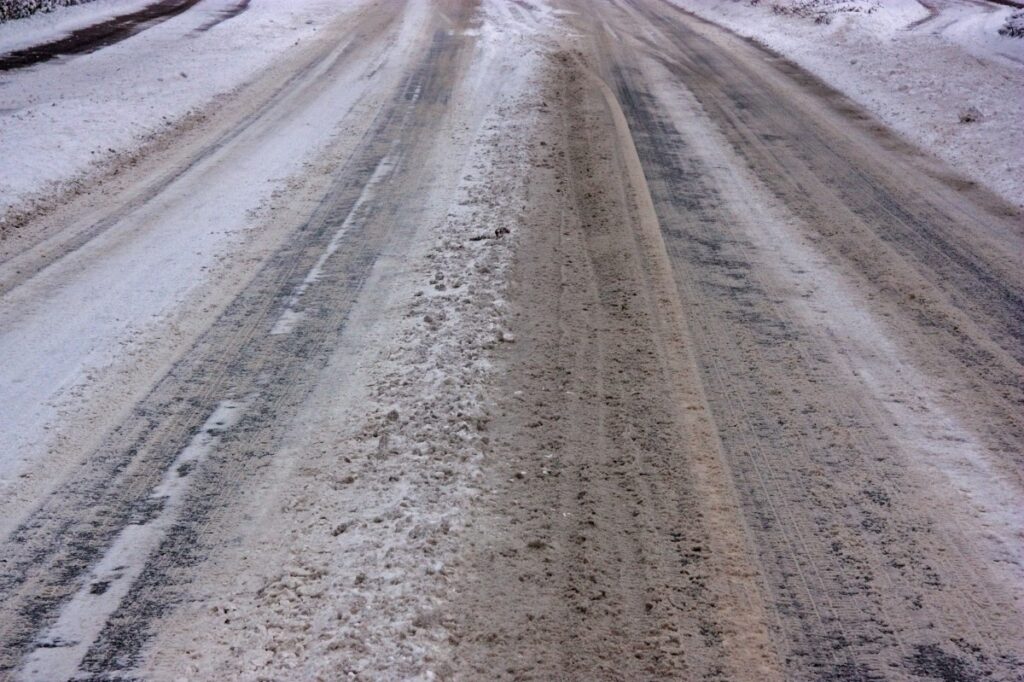
As longtime residents know, New England winters are nothing to sneeze at. Keeping roads clear and safe to drive on is a priority during snowy and icy weather, and one of the most effective ways to do that is to apply salt to the road surface. Salt reduces the freezing temperature of water and prevents the formation of ice on road surfaces, as well as melting snow on contact. When the storm is done, though, all of that salt has to go somewhere. Melting snow and ice carry the salt into our rivers, wetlands, and groundwater, where it remains in the form of sodium and chloride ions (as you likely remember from chemistry class, salt is an ionic compound with the formula NaCl – one sodium ion and one chloride ion).
Those ions can cause a host of problems for both wildlife and humans. Elevated sodium levels in drinking water can be dangerous for people with blood pressure problems, diabetes, and other conditions. High chloride levels over time can cause kidney and heart disease, as well as corroding metal pipes and other infrastructure. Salt on sidewalks and roads can also “burn” the feet of both wild and domestic animals, leading many people to invest in booties or other paw protection for winter dog walks. Salt is also rough on roadside plants; as the amount of salt in the soil increases, it becomes harder for plant roots to use osmosis to pull in water that the plants need. This causes plants to wilt and burn as though in a drought even when the soil is saturated with snowmelt. Salt that enters our waterways can harm or kill fish, amphibians, and the vital tiny crustaceans, insects, and other creatures that form the basis of freshwater food chains.
Make no mistake – the amount of salt we’re putting out to deal with winter weather is increasing. In the early 1940s, before the boom in road paving and suburban development, the U.S. road department deployed at most a few thousand tons of salt per year. Today, the road department is spreading over 19 million tons of salt on roads every year – a more than a ten thousandfold increase! So, what can we do to try to reduce the negative impacts of salt on the environment and human health?
The simplest answer, of course, is to use less salt. There are alternatives to salt treatment. Sand, for example, has a long history of use as a traction-improving treatment on snowy and icy roads, and it’s much cheaper than salt and less chemically abrasive. Unfortunately, sand doesn’t just disappear any more than salt does, and large amounts of sand can be even more devastating to freshwater rivers and human drainage systems that can get clogged and require extensive clearing. Many municipalities have embraced beet juice as an additive to their salt mixtures. The natural sugars also inhibit ice formation and make road surfaces sticky, allowing more of the salt that’s scattered from trucks to stick to the roadways and do its job. At least one recent study has suggested, however, that the extra nutrients from large quantities of beet juice could cause algae blooms and eutrophication.
It may be that the best solutions (environmentally speaking) are purely mechanical ones, like adaptive plow blades that fit road surfaces more closely and can remove snow and ice without as much need for salt. There’s also something to be said for changing public attitudes and expectations around road salting. It might be useful to remember that, for most of human civilization, when the snows fell thickly enough, everyone just accepted that sometimes you need to take a day or two off!
